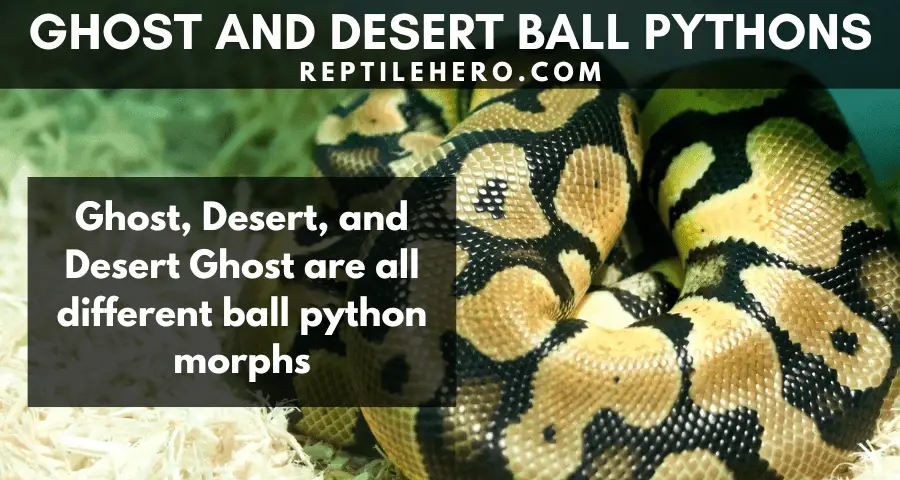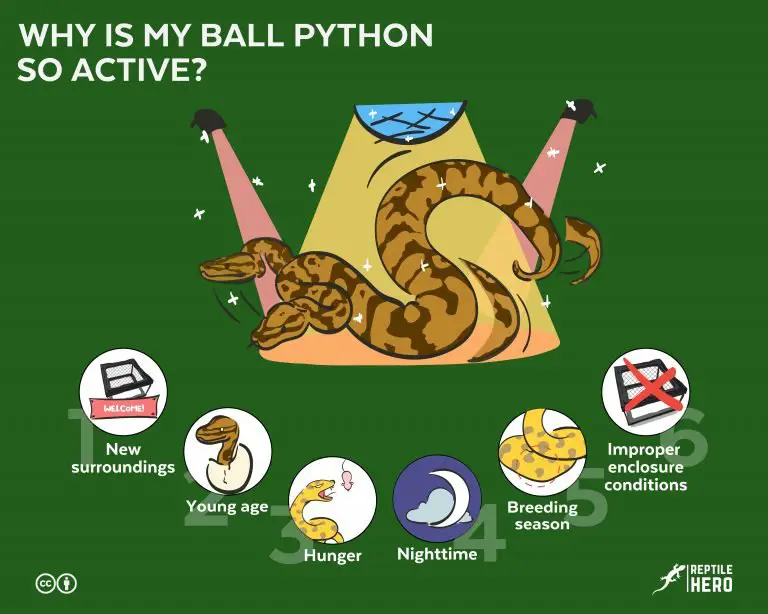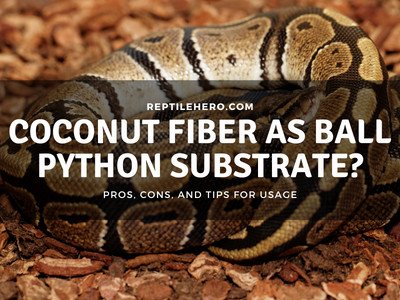What is a Ghost Ball Python?
Have you recently seen ball python listings that included ghost morphs? You might be interested in what it looks like and why it is sought after. Correct identification of this morph is important to avoid fatal genetic combinations!
Ghost ball pythons came from the wild morph as a color mutation which became the foundation for selective breeding in captivity. In comparison to a normal ball python, the ghost morph has a faded “creamier” coloration.
Ball pythons morphs are produced by breeding pairs with specific genes. But how can you identify a ghost ball python? If there are similar-looking morphs, how can you determine one from another? Learn all of these as you continue reading!
How Can You Identify a Ghost Ball Python?
Ghost ball pythons have a lighter shade and are normally distinguished by their faded patterns and colors. Most keepers describe them as having creamier color in comparison to a normal morph.
Identify a ghost ball python by simply looking at the snake’s black patterns. If it has faded hues, then you’ve got a ghost. You can also see that its body is yellowish instead of the rich brown coloration of the normal or base morph.
For the ghost ball python, there are also no changes in the patterning when compared to a normal one. Their colors can even be described as similar to a ball python in shed.
A keeper I knew even compared this color mutation to the process of adding creamer to a coffee.
Essentially, ghost ball pythons are a faded and lighter version of the normal ball pythons.
How Does the Ghost Gene Work in Ball Pythons?
The ghost gene will lessen the dark pigmentation of the ball python, causing it to fade to an extent. The ghost morph can also be called hypomelanistic or simply “hypo”.
Hypomelanistic ball pythons have fewer melanin pigments than normal which makes their overall coloration lighter [2]. The ghost or hypo gene of ball pythons is recessive which means you need both parents to have this gene to produce ghost babies.
>> Refresh your knowledge of genetics in our article on leopard gecko morphs!
Let’s say you have a ghost ball python, its partner must have a ghost gene as well to produce more ghost babies.
Even if the ghost gene is not physically visible on the snake, as long as it carries this genetic code, its offspring can either be visual ghosts or just carriers of the gene.
If you breed the following together: Normal + Ghost = Normal het Ghost
The offspring will look like a normal ball python but it will carry the ghost genes.
Another common combination is:
Normal het Ghost + Normal het Ghost = 1/4 of the clutch will be ghosts
This means that you will have an average 1 in 4 chance of getting a ghost ball python with this pairing. Meanwhile, 3 out of all 4 eggs are most likely just going to be carriers of the hypo ghost gene.
Pro Tip: For a full clutch of ghost ball pythons, you will need to have a ghost or hypo pair.
>>Planning to breed ball pythons? First, check out our article on morphs with problems!
Are Ghost Ball Pythons Rare?
Ghost ball pythons are currently quite common in the reptile pet market. But since they possess recessive traits, combining them with other morphs will add significant value and rarity.
If you try searching for ghost ball pythons in online shops now, you can see that it is readily available, especially in the US and UK.
One site even has almost 200 listings of ghost ball pythons and over 2,000 listings of various combinations with the gene.
The typical price of a ghost ball python will be around 150–300 dollars depending on the snake’s size. However, this price can increase substantially when much rare morphs are added into the mix.
When another recessive trait like clown or pied is combined with the ghost morph, you can expect the price to go up to a thousand bucks or more.
Popular Ghost Ball Python Combinations
Ghost ball pythons are a popular pairing option for combinations with incomplete dominant genes like pastel, Mojave, and banana. The most sought-after ghost combinations are with recessive traits like pied, clown, and caramel albinos.
One of the most popular ghost ball python morphs is the mimosa which is a combination of champagne and ghost traits.
The mimosa ball python has beautiful combinations of lavender, brown, and a yellow stripe on the dorsal spine to top it off.
Besides that, another amazing combination for a ghost ball python is the hypo clown which is a combination of the ghost and hypo gene.
Adding a ghost gene together with a clown morph will produce a more vibrant clown with the distinct fades of the hypo mixed in.
But how can you get a double recessive ball python such as a hypo clown?
To get a hypo clown, you will need to first successfully breed a clown and a ghost ball python together. Such a pairing will produce babies which are both hets for clowns and hypo.
Afterward, these double-het babies should be raised up to breed with one another. In effect, they can produce an average of 1 in 16 hypo clowns eggs.
Unsurprisingly, this long process is the reason why double-recessive ball python morphs are much more expensive and rare compared to other ghost morph combinations.
Are Ghost and Desert Ghost Ball Python the Same?
For ball pythons, the ghost morph is completely different from the desert ghost but both are recessive genes. Ghosts or hypos generally have a faded and lighter coloration, whereas desert ghosts are a bright yellow or almost white.
Desert ghost ball pythons have a bright yellow-to-almost-white coloration with deep blacks in their patterns. Basically, it looks like a pastel ball python with more intense coloration.
When compared side-by-side, desert ghosts have a brighter color than ghost ball pythons.
I have seen a desert ghost ball python from a breeder I know and noticed its distinct bright yellow color. Some of the specimens are almost white.
Honestly, I am surprised to see that the pictures of super bright desert ghosts online don’t seem to have been enhanced. The pictures don’t do justice to the ones I saw firsthand.
The breeder also said that a ghost or hypo ball python will slightly fade in coloration as it grows. Conversely, the desert ghost will retain its brightness until adulthood.

Further Questions
How big do ghost ball pythons get?
Ghost ball pythons will grow as big as most other common ball python morphs which is around 3–4 feet for males and 4–5 feet for females. The ghost or hypomelanistic ball python is only a color mutation and not a separate subspecies of the python.
Are desert and desert ghosts the same ball python morph?
Desert is a dominant-trait morph while the desert ghost is a recessive-trait morph of ball pythons. They have similar coloration but the desert ghost has an overall brighter coloration. More importantly, the females of the desert ball pythons are also infertile.
Summary of What is a Ghost Ball Python
The Ghost also known as Hypomelanitstic or “hypo”, is a ball python morph that is yellowish brown in color. It can also be described by having creamier coloration in comparison to the normal ball python.
Ghost ball pythons are a recessive trait which means that in order to produce one, both mating partners should have a ghost gene. They are quite common but combinations with other genes, especially recessive ones, are rare.
Ghost and desert ghost ball pythons are different in terms of coloration but both are recessive genes. Desert ghosts are bright-yellow in coloration with deep blacks.
Sources
[2] https://www.biologyonline.com/dictionary/hypomelanism
[3] https://jkrballstreetjournal.com/2016/07/17/fertility-in-desert-females-an-overview-and-case-study/







